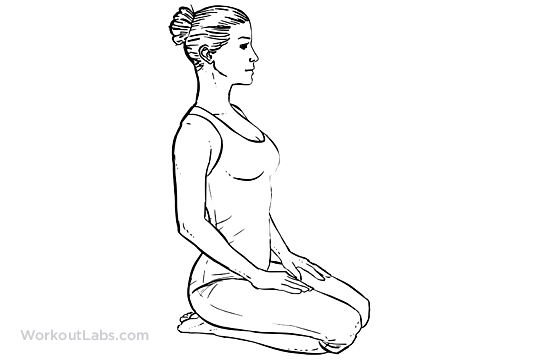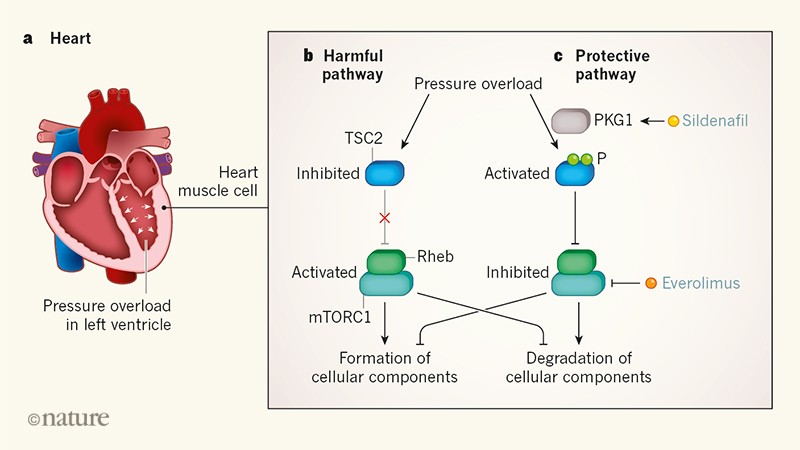
A yoga sequence's overall experience is the most important thing. These qualities should be reflected in the yoga poses that are included in the sequence. Each class should focus on a specific aspect of the practice. When sequencing yoga poses you need to consider the season, moon phase, time of day and current events. It is also important to keep your focus on your goals. Here are some tips to help you create an effective yoga class: Choose the best yoga poses that you want to concentrate on.
First, determine when you want to teach the poses. It is easier for beginners to begin with a warm up yoga sequence. However, more experienced yogis may prefer to use a yoga warmup to prevent injury. A beginner can start by practicing part one, which involves sitting comfortably on a chair or block. Part two can be practiced next. You can add advanced variations to the sequence to make it more difficult.
After you've chosen your peak poses, add some stretches and meditations to the sequence. These will improve the student's awareness of their bodies and give them a better understanding about peak poses. You should consider the needs and bodies of your students when designing your sequence. If your classes are primarily for beginners, you should start with asanas that are easy for you to execute. You should practice the asanas slowly and carefully during your class.

Consider the physical needs of your students when designing the sequence. Students should be able to do the highest positions by the end of the third or fourth class. The yoga class should feel invigorating, comfortable, and well-structured. You should also remember that yoga is about the process, not the end result. It is important to enjoy the practice as well as the journey. It should be enjoyable if you do this. You should be truthful with your body, breath and the rest of the class.
Before you begin teaching yoga, it is important to understand the specific needs and abilities of each student. A good yoga class will move students through poses with ease and make them feel comfortable. This will help you as a teacher to feel confident. You should ensure that your students have the correct yoga experience. Beginners shouldn't start a yoga class with a seated pose. You should then stretch after your posture. It is important to avoid bad postures.
Teaching yoga classes is not easy. It's important to be flexible. An example: A beginner might require more time to master the basic poses. It may also be necessary to spend more time powering through the poses. You must also be aware of the students' abilities when teaching a class. Some students may require more time to adjust to new injuries.
Your students will be able to achieve their goals by following a yoga sequence. It is important to be able to hold the correct postures in the right order. It is important to understand the significance of yoga postures. The poses should be appropriate for you and your students. Respect your students' rights. Respecting your students' needs is essential. You won't be able teach yoga classes well if you don't know how to do it.

It is important to follow a yoga routine. It allows you the flexibility to add the poses to your classes. You don't even need to attend a yoga class. Instead, you can practice from the comfort of your home. Make a playlist that you like. It's not only a great way to teach a yoga class, but it's also a great way to build your confidence. This way, you'll feel confident about yourself and your ability to teach.
Your students will love creating a sequence of yoga poses. You can be certain that your students will follow a yoga sequence that you have created. You can create a class that is amazing by practicing. You'll also make your students happier and more comfortable. This is your greatest teaching gift. This will make your students' experience enjoyable.
FAQ
How To Lose Belly Fat Fast
There are many fast ways to lose belly fat. One option is to eat less calories and drink more water.
Running and swimming are two other ways to boost your metabolism.
Avoid sitting down if your goal is to lose belly fat quickly. Instead, get up and move around throughout the day. This will allow you to burn more calories.
You don't have to give up on trying all of the above methods if you still struggle with your belly fat.
This requires a belt. When you sit down, the belt tightens around your waist.
As a result you'll feel uncomfortable and will be more mobile. This will make you lose more calories and help you reduce your belly fat.
Why is Metabolic Wellness the Key to Aging Well
People are living longer lives today than at any point in history. As they live longer, they also get sicker. And while we've made great strides in medical science, it's becoming increasingly clear that our current approach isn't working.
It's time to change our perceptions of health and aging. Healthful aging requires that we start to think about metabolic health, which is not only weight loss but overall well-being.
If you want to live a healthy, active lifestyle for the rest of your life, it is important to maintain a strong metabolism throughout your entire life.
The good news is that there are many ways to improve your metabolic health. One way to improve your metabolic health is to incorporate these seven foods into your daily diet.
-
Resveratrol has been proven to increase cellular longevity. They also contain antioxidants and vitamins C & E.
-
Pinto beans and lentils make excellent sources of fiber as well as plant-based protein. These nutrients help maintain blood sugar levels so they don’t spike and fall.
-
Broccoli's sulforaphane has been shown to protect DNA from damage in research. It might even slow down the progression of cancer.
-
Chia Seeds have high levels of omega-3 fatty oils and fiber. They are also high in antioxidants and proteins. All of these nutrients are good for heart health, brain function, gut health, and overall health.
-
Green tea contains catechins, which are polyphenols. Studies have shown that green tea contains catechins which are linked to lower bone fractures and cardiovascular disease. They also reduce cognitive decline and diabetes risk.
-
Salmonis rich in vitamin D and low in saturatedfat, salmon is one of the best sources for lean protein.
-
Walnuts have omega-3s and antioxidants such as alphalipoic acid (ALA). ALA is an antioxidant that protects against inflammation. It also boosts energy production.
Is it true, that too much protein can cause kidney stones?
Protein helps to maintain healthy bones, tissue, and skin. Too much protein can cause calcium to be excreted through the urine. In turn, this can result in kidney stones.
Not everyone who eats more than 2g of protein per kilogram (2.2 lbs) of bodyweight will get kidney stones. Some people can eat high amounts of protein without getting kidney stones.
By watching how much sodium you consume, kidney stones can be prevented. Sodium is important for maintaining the body's water balance. A high level of sodium can increase the risk of developing kidney stone.
If you have kidney stones, you can reduce your intake of protein. Protein provides about half of the daily caloric needs for most adults. It is possible to lose weight by cutting down on your intake of proteins.
If you do decide to eat more protein, don't go overboard. Do not eat more than 20% of your daily calories from protein.
What does butter do?
Butter is a great source of saturated fats. This type fat is great for your skin and hair. It also helps you build stronger bones.
Vitamin K in butter also prevents bleeding from cuts, bruises and other injuries. Vitamin K is combined with vitamin C to prevent bruises.
Butter is also rich mineral, including calcium and phosphorous. These elements are good for teeth and bones.
Butter does have some drawbacks. Butter is high in cholesterol. A few studies have shown that too much cholesterol can increase the risk of developing coronary disease.
Butter is also high-fat, which can contribute to obesity and increase cholesterol.
You can spread butter on bread if you are forced to use it. Bread absorbs more oil than potatoes or pasta.
How many calories should I consume daily?
The exact amount varies depending on the person. On average, 2000 to 2500 calories are consumed per day. It's important to assess your life style, gender, age and height in order to determine how much calories you need.
What is the best way to lose weight?
Losing weight can be difficult. Many people give-up easily because they don’t have the right information.
You can lose weight by following a few simple steps.
First, make sure you eat less calories than you burn. If you consume more calories than what you burn, you will gain weight.
Second, you must start exercising regularly to burn off all those calories. You can choose from a variety of exercises such as walking, biking or dancing.
Third, quit smoking cigarettes and alcohol. These habits cause you to consume more calories than you would otherwise.
Fourth, reduce your intake of fatty and processed foods. They can be replaced by healthier options, such as fruits and vegetables, lean meats or whole grains, legumes, seeds, beans, and nuts.
Fifth, change your lifestyle. You may have to get up before the rest of the world to exercise.
Sixth, it is important to be disciplined about your diet and follow it.
You can also burn excess calories by joining a gym, or taking an aerobics course.
Follow these simple steps and you'll soon start to see the results.
Does Weightlifting Burn Fat Faster?
Weight lifting will help you burn more fat, but it's best to combine it and cardio.
It is important to do weightlifting right after cardio exercise in order to reap the full benefits.
If done correctly weightlifting can raise your heart rate, oxygen consumption and help you lose weight.
But if you do not combine it with cardio, you will not see any significant changes in your body composition.
Statistics
- According to the American Academy of Dermatology (AAD), men over 50 are at a heightened risk of developing it. (healthline.com)
- Candidates and applicants must pass all four tests at 70% (minimum level) to graduate from Basic Deputy U.S. Marshal (BDUSM) Training. (usmarshals.gov)
- By John Thompson Take a whopping 38% off a set of PowerBlock Pros. (menshealth.com)
- The PRS enabled risk stratification for overall prostate cancer and lethal disease with a four-fold difference between men in the highest and lowest quartiles (HR, 4.32; 95% confidence interval [CI], 3.16-5.89). (pubmed.ncbi.nlm.nih.gov)
- 10 pounds in a month is likely during a lean bulking phase, especially for beginners. (muscleandstrength.com)
External Links
How To
What nutrients do men need each day?
Men need healthy growth and development. The body requires vitamins, minerals, proteins, carbohydrates, fats, water, fiber, and other essential elements.
You also need specific nutrients for different times in the day. When you're sleeping, your body uses energy from food for hormones, proteins, and enzymes. When you get up, protein is used to repair and build muscle.
Your body uses the night to break down fat and store extra energy as glucose. During this time, your body needs fewer calories but still needs sufficient nutrients. If you feel hungry, you may consider having a snack during the evening.
When you work out, you need adequate levels of carbs and protein to fuel your muscles. If you exercise hard, you might feel muscle soreness.
To prevent this, you must consume carbs and protein within 2 hours of training. Your body will use stored glycogen to produce glucose for energy.
After your workouts, you should eat protein immediately. This prevents muscle tissue loss that happens while you sleep.
Your body produces lactic acid during high levels of physical activity. Lactic acid builds up in the bloodstream and causes fatigue. Avoid this by eating foods rich in carbohydrates such as fruits or vegetables.
Carbohydrates are a good source of energy to help you recover from hard exercise.
You may also want to include lean meats and fish, as well as yogurt, cheese, yogurt, beans and nuts in your diet.
All of these foods contain high-quality protein. Protein promotes muscle growth and repairs damaged tissues. Protein is also necessary for the production of sex hormones such as testosterone.
A healthy skin, nails and joints requires sufficient dietary fats. Healthy men need to consume between 20%-35% of their total calories from fat.
Fat is good for your heart and helps you fight cancer. It also keeps your brain functioning properly.
Vegetable oils such as sunflower oil and soybean oil can provide most of your fat needs.
These oils contain high levels of monounsaturated fat acids (MUFAs). MUFAs are good for lowering cholesterol and reducing inflammation. They protect your cells against free radical damage.
Saturated fats (SFAs) are found mostly in animal products like meat, dairy products, and butter. SFAs raise LDL ("bad") cholesterol and increase triglycerides. They are also good for weight loss and belly fat.
Plant-based fats such as vegetable oils, seeds, nuts and grains contain polyunsaturated (PUFAs). PUFAs are good for your heart health and help to reduce inflammation. They also help control blood sugar and cholesterol.
Low HDL ("good") cholesterol can lead to erectile problems in men. High consumption of saturated fats increases bad cholesterol, which lowers the level of good cholesterol.
Red meat and pork are a common source of prostate problems in men who eat a lot. When heated, nitrates are converted to nitrosamines. These compounds can cause cancer.
Nitrites and other harmful chemicals are common in processed meats. They should be avoided.
The American Heart Association recommends eating no more than 2 servings of red meat per week. Instead, opt for poultry, fish, legumes and tofu as well as whole grains bread and cereals.